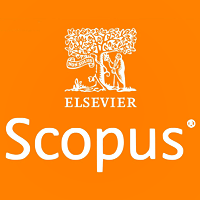
This article is an open access article distributed under the terms and conditions of the Creative Commons Attribution license (CC BY).
ORIGINAL RESEARCH
Panel of IFN-I-induced genes in systemic scleroderma: a stratification biomarker potential
1 Pirogov Russian National Research Medical University, Moscow, Russia
2 MyLaboratory LLC, Moscow, Russia
3 Moscow City Research Center Hospital No. 52, Moscow, Russia
4 Federal Scientific and Clinical Center of Resuscitation and Rehabilitation, Moscow, Russia
5 Shemyakin and Ovchinnikov Institute of Bioorganic Chemistry Russian Academy of Sciences, Moscow, Russia
Correspondence should be addressed: Olga V. Britanova
Miklukho-Maklaya, 16/10, Moscow, 117997, Russia; moc.liamg@natirblo; Zinaida Yu. Mutovina — Pekhotnaya, 3, Moscow, 123182, Russia, ur.liam@anivotumz
Funding: the study was supported by the grant from the Moscow Government (R&D project No. 1603-47/23 dated 08.06.2023), sponsored by the Moscow Center for Innovative Technologies in Healthcare.
Author contribution: Mutovina ZYu — concept; Zhurina TI, Saifullin RF — acquisition of rheumatology and medicine data; literature review; Myshkin MYu — data analysis; Bufeeva LS — sample collection, RNA extraction; Shagina IA — RT-qPCR optimization and procedure, primary data analysis, manuscript writing, literature review; Turchaninova MA, Golovina OA, Britanova OV — manuscript writing, literature review.
Compliance with ethical standards: the study was conducted in accordance with the Declaration of Helsinki. The informed consent for biomaterial collection and testing during inpatient assessment settings was obtained from all patients.
Systemic scleroderma (SS) remains a disease with a high mortality rate; validated biomarkers for stratification and disease monitoring are still lacking. The study aimed to assess the expression of the developed panel of IFN-I-induced genes (IFI27, IFI44, IFIT3, ISG15, XAF1) in peripheral blood and affected skin of patients with SS. We tested samples of 48 SS patients and 31 healthy donors. Gene expression was analyzed using RT-qPCR (ΔΔCt) method (with normalization to the reference housekeeping gene TBP). The SFRP4 gene expression was used as a marker of skin fibrosis. Expression values of the IFN-I-induced genes were significantly (p < 0.1) increased in both blood and skin of SS patients compared to healthy donors. Comparison between compartments revealed that the expression levels of XAF1, IFI44, IFIT3, ISG15 in the patients’ blood are higher (p < 0.01), than those in skin samples. The IFI27 gene expression, in contrast, is higher in the skin (p < 0.01). The findings show that the test system developed for interferon signature assessment can potentially be used as a noninvasive tool for stratifying SS patients by analysis of RNA from peripheral blood samples, to substantiate the prescription of therapy with the IFN-I receptor blockers.
Keywords: anifrolumab, systemic scleroderma, SS, Type I interferon, IFN-I-signature, qRT-PCR, noninvasive diagnosis
